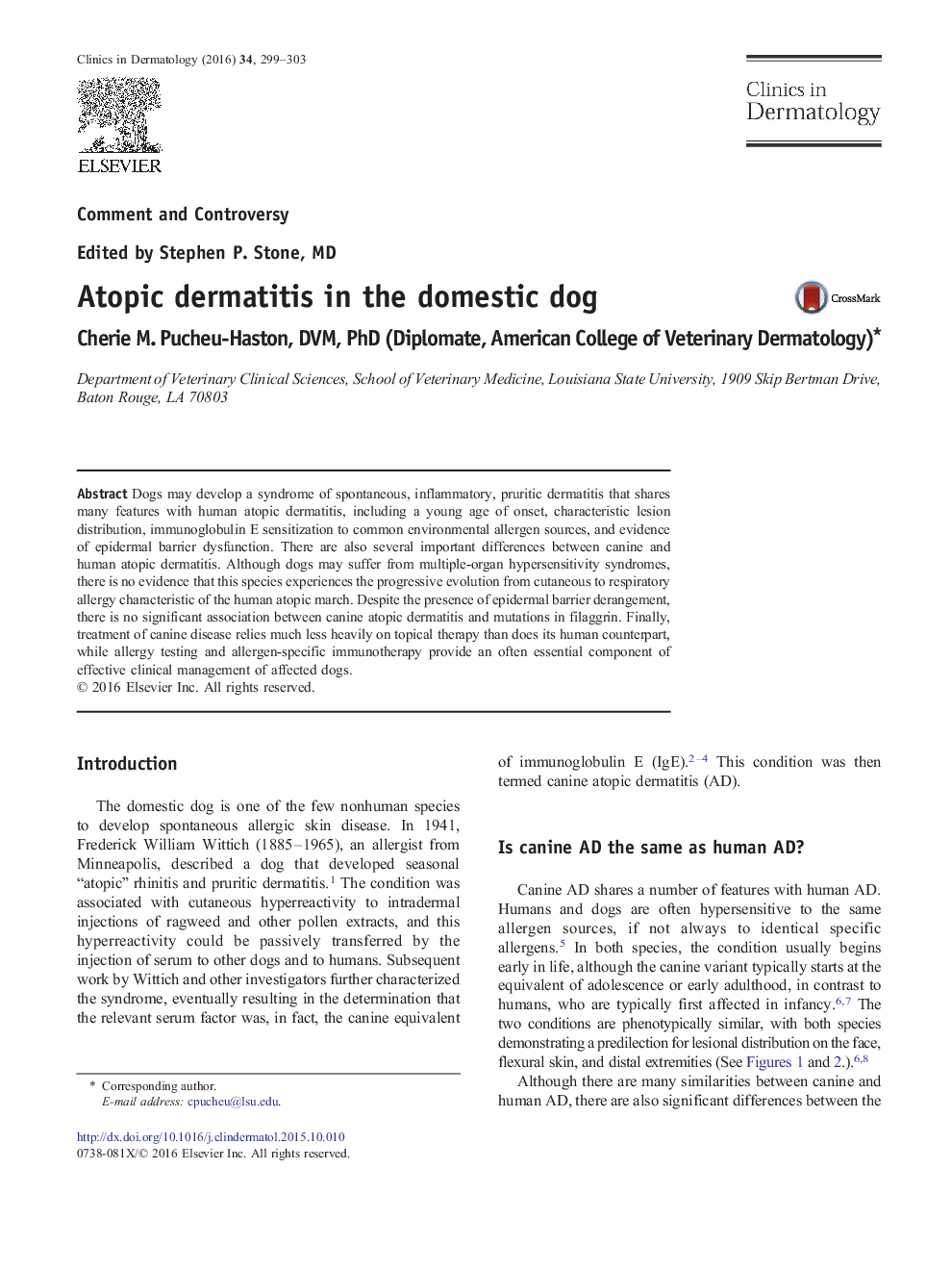| Article ID | Journal | Published Year | Pages | File Type |
|---|---|---|---|---|
| 3194006 | Clinics in Dermatology | 2016 | 5 Pages |
Dogs may develop a syndrome of spontaneous, inflammatory, pruritic dermatitis that shares many features with human atopic dermatitis, including a young age of onset, characteristic lesion distribution, immunoglobulin E sensitization to common environmental allergen sources, and evidence of epidermal barrier dysfunction. There are also several important differences between canine and human atopic dermatitis. Although dogs may suffer from multiple-organ hypersensitivity syndromes, there is no evidence that this species experiences the progressive evolution from cutaneous to respiratory allergy characteristic of the human atopic march. Despite the presence of epidermal barrier derangement, there is no significant association between canine atopic dermatitis and mutations in filaggrin. Finally, treatment of canine disease relies much less heavily on topical therapy than does its human counterpart, while allergy testing and allergen-specific immunotherapy provide an often essential component of effective clinical management of affected dogs.
